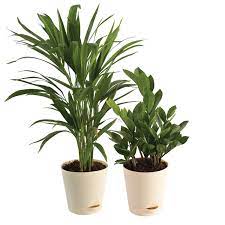Plants
Courtesy : www.audubon.org/
Over the past century, urbanization has taken intact, ecologically productive land and fragmented and transformed it with lawns and exotic ornamental plants. The continental U.S. lost a staggering 150 million acres of habitat and farmland to urban sprawl, and that trend isn’t slowing. The modern obsession with highly manicured “perfect” lawns alone has created a green, monoculture carpet across the country that covers over 40 million acres. The human-dominated landscape no longer supports functioning ecosystems, and the remaining isolated natural areas are not large enough to support wildlife.
Native plants are those that occur naturally in a region in which they evolved. They are the ecological basis upon which life depends, including birds and people. Without them and the insects that co-evolved with them, local birds cannot survive. For example, research by the entomologist Doug Tallamy has shown that native oak trees support over 500 species of caterpillars whereas ginkgos, a commonly planted landscape tree from Asia, host only 5 species of caterpillars. When it takes over 6,000 caterpillars to raise one brood of chickadees, that is a significant difference.
Unfortunately, most of the landscaping plants available in nurseries are alien species from other countries. These exotic plants not only sever the food web, but many have become invasive pests, outcompeting native species and degrading habitat in remaining natural areas.
Landscaping choices have meaningful effects on the populations of birds and the insects they need to survive. The bottom line is this—homeowners, landscapers, and local policy makers can benefit birds and other wildlife by simply selecting native plants when making their landscaping decisions. To do your part, you can use Audubon’s handy database to discover native plants in your area and which types of birds they’ll attract. Just enter your zipcode, and it’s as easy as that.
For more information on why native plants are so important to helping birds and other wildlife, see the below video and benefits.
Video clip: Doug Tallamy
Benefits of Native Plants:
Low maintenance:
Once established, native plants generally require little maintenance.
Beauty:
Many native plants offer beautiful showy flowers, produce abundant colorful fruits and seeds, and brilliant seasonal changes in colors from the pale, thin greens of early spring, to the vibrant yellows and reds of autumn.
Healthy Places for People:
Lawns and the ubiquitous bark-mulched landscapes are notorious for requiring profuse amounts of artificial fertilizers and synthetic chemical pesticides and herbicides. The traditional suburban lawn, on average, has 10x more chemical pesticides per acre than farmland. By choosing native plants for your landscaping, you are not only helping wildlife, but you are creating a healthier place for yourself, your family, and your community.
Helping the Climate:
Landscaping with native plants can combat climate change. In addition to the reduced noise and carbon pollution from lawn mower exhaust, many native plants, especially long-living trees like oaks and maples, are effective at storing the greenhouse gas carbon dioxide.
Conserving Water:
Because native plants are adapted to local environmental conditions, they require far less water, saving time, money, and perhaps the most valuable natural resource, water.
Wildlife
In addition to providing vital habitat for birds, many other species of wildlife benefits as well. The colorful array of butterflies and moths, including the iconic monarch, the swallowtails, tortoiseshells, and beautiful blues, are all dependent on very specific native plant species. Native plants provide nectar for pollinators including hummingbirds, native bees, butterflies, moths, and bats. They provide protective shelter for many mammals. The native nuts, seeds, and fruits produced by these plants offer essential foods for all forms of wildlife.



